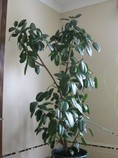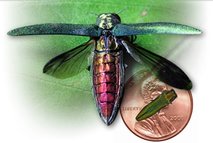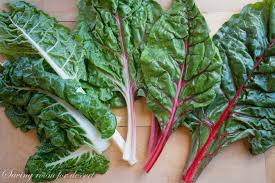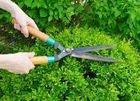|
Ozark Green Thumb BCMG Monthly e-Newsletter |
|
|
|
FEBRUARY GARDEN CHECKLIST
For more information on any of the above points, contact the University of Arkansas Division of Agriculture Cooperative Extension office at 425-2335.
0 Comments
 This salad is delicious and looks elegant. It appears that it would be would be a lot of work. What makes it nice is you can do the first three steps ahead of time and just assemble it before serving. Makes 4 servings CANDIED WALNUTS
* Place walnuts in sauce pan, add water just to cover nuts and simmer over medium heat until slightly softened, about 5 minutes. * Drain and transfer to paper towels to dry. * Combine nuts and powdered sugar. * Heat 2 tablespoons oil to 350 degrees in a heavy saucepan. * Fry walnuts in batches until browned and crisp, 1 to 2 minutes. * Transfer walnuts with slotted spoon to a baking sheet to cool. Salt slightly. * Store unused nuts in an air-tight container. POACHED PEAR
* Combine sugar, lemon juice and water and boil over high heat until sugar dissolves, 2 minutes. * Add pear halves and cook over low heat, covered, until tender, about 20 minutes. * Cool, then remove pear with slotted spoon and cut into 1/4 inch thick slices. BALSAMIC VINAIGRETTE
* Warm 1 tablespoon oil in skillet over low heat and saute garlic and shallot until translucent, about 4 minutes. * Combine garlic and shallot with balsamic vinegar in glass bowl. * Slowly whisk in 3/4 cup oil. Season with salt and pepper to taste; add sugar to balance flavor. * Gently stir in tomato and basil. Makes 3/4 cup. ASSEMBLY
* Divide salad among 4 plates and top with slices of Poached Pears, Candied Walnuts, tomato and Gorgonzola cheese.  A rubber tree plant is also known as a Ficus elastica. These large trees can grow up to 50 feet tall. When learning how to care for a rubber tree plant, there are a few key things to remember, but rubber plant care isn’t as difficult as one might think. Starting with a young rubber tree houseplant will allow it to adapt to being an indoor plant better than starting with a more mature plant. When it comes to rubber plant care, the correct balance of water and light is crucial, as with any plant. You can control the amount of light and water it gets, which is important because they shouldn’t have too much of either. Light When you have a rubber tree houseplant, it needs bright light but prefers indirect light that isn’t too hot. Some people recommend putting it near a window that has sheer curtains. This allows plenty of light, but not too much. Water The rubber tree plant also needs the right balance of water. During the growing season, it needs to be kept moist. It is also a good idea to wipe off the leaves of your rubber tree houseplant with a damp cloth or spritz it with water. If you water the rubber tree plant too much, the leaves will turn yellow and brown and fall off. During the dormant season, it may only need watered once or twice a month. If the leaves begin to droop, but not fall off, increase the water you give the rubber tree houseplant gradually until the leaves perk back up again. Once you know how to care for a rubber tree plant and it is growing well, you can begin the propagation of indoor rubber tree plants. In order to promote new leaves on a current rubber tree houseplant, cut a slit in the node where a leaf fell off. This will allow a new leaf to grow quicker. There are a couple different methods for creating new rubber tree plant cuttings. The simplest is to take a small branch from a healthy tree and put it in good potting soil or water and let it root. Another method, called air layering, is where you make a cut in a healthy rubber tree houseplant, put a toothpick in the hole, then pack damp moss around the cut. After that, you wrap it with plastic wrap to keep the moisture level higher. Once roots begin to appear, cut the branch off and plant. All these things will lead to successful rubber plant care. Source: Shari Anderson
Garden Know How This is the month of Chocolate, Happy Valentines Day!  Pie Plate: 9 inch Recipe:
Directions:
 The Emerald Ash Borer (Agrilus planipennis or EAB) is responsible for the destruction of tens of millions of ash trees in 27 states. Native to Asia, it likely arrived in the United States hidden in wood packing materials. The first U.S. identification of Emerald Ash Borer was in southeastern Michigan in 2002. There are a variety of treatment options that can serve as a control measure for the EAB, but they are not a cure. Because pesticide regulations differ from State to State, homeowners should contact their State department of agriculture or local extension office for guidance.
What is at Risk:
What is the source:
Signs and Symptoms:
What you can do:
Source: USDA
Animal and Plant Inspection Service  Gardeners have been growing Swiss chard since the time of Aristotle, a testament to its enduring appeal; food plants have a way of making friends when they’re colorful, nutritious, delicious, and hardy. Chard is sort of a forerunner to beets and a close cousin to spinach, close enough that in many instances it can be substituted for the latter. We’ve compiled a few suggestions here for its cultivation and storage. Types to Try White-stemmed varieties, consistently outperform their more colorful counterparts in terms of productivity and bolt resistance. Brightly colored varieties, are the queens of the edible ornamental. Varieties bearing red, pink, yellow, or orange ribs are available individually or in pre-packaged mixtures. Perpetual varieties, which are often called perpetual spinach, have thinner stems and smaller, smoother leaves than larger varieties, and they taste more like spinach. The short, stocky plants work well in small gardens and containers. Check out our chart for growing swiss chard varieties. When to Plant In spring, sow directly in the garden two weeks before your last frost date, or start seeds indoors three to four weeks before your last frost date and set seedlings out just as the last frost passes. In fall, start seeds about 10 weeks before your first frost date, and set the seedlings out when they are four weeks old. How to Plant Prepare a rich, fertile bed by loosening the soil while mixing in compost and a balanced organic fertilizer, applied at label rates. Plant seeds half an inch deep and 3 inches apart. Set out seedlings 12 inches apart. Indoors or out, thin newly germinated seedlings with cuticle scissors instead of pulling them out. Chard seed capsules often contain two or more seeds. If more than one germinates, promptly snip off all but the strongest sprout at the soil line. Gradually thin direct-sown seedlings to 12 inches apart. Pest and Disease Prevention Tips
Source:Barbara Pleasant
April/May 2009 Mother Earth News  Pruning trees and shrubs tends to be an intimidating process for many people, but it doesn’t need to be intimidating at all. Knowing when to prune to trees and shrubs can take some of the guesswork and concern out of this garden chore. Observing a few simple pruning tips will also make the job easier on you and your plants. In general, it is best to prune plants while they are dormant in the winter. This avoids shocking the plant. If a plant is in desperate need of heavy pruning, it should be done while the plant is dormant. But if a plant just needs a quick trim to maintain a pleasing form, the rules change. Avoid heavy pruning in the spring while a plant’s leaves are expanding. If a little light pruning is necessary at this time, go ahead and prune away, but this isn’t the time for drastic pruning. Dead limbs and branches may be pruned off at any time. If you’re unsure whether or not a branch is truly dead, scratch the bark with a fingernail. A living branch will appear green beneath the bark. If a plant flowers in the spring, it can be pruned immediately after it has finished blooming for the season. Plants that bloom in the early spring set their flower buds in the fall, and winter or early spring pruning of these plants would reduce the amount of spring blooms for them. Shrubs that bloom on new growth in the summer or fall should be pruned in the winter. This will encourage the plant to put out plenty of new growth the following spring, and more new growth means more blossoms to enjoy. Always disinfect your pruning shears before moving from one plant to another to avoid spreading any disease among plants. A quick dip in rubbing alcohol works well as a disinfectant. Source: Free Plants.Com
|
Archives
April 2022
|
|
